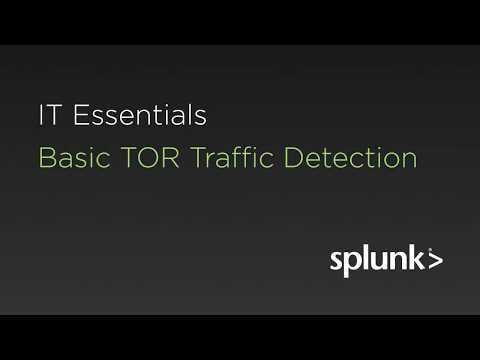- What is malicious network activity?
- How do I check my malicious traffic?
- What are malicious packets?
- Can I delete malicious file?
- How do I remove malware from my Wi-Fi?
- What can be used to detect malicious activities?
- How do I find an infected computer on my network?
- What is a malicious process and how do you detect it?
- What is an example of a network attack?
- What problems can malicious files cause?
- What is malicious DNS traffic?
- Does resetting remove malware?
- Is malicious harmful?
- How do I get rid of malicious virus?
- What is malicious example?
- What is malicious Wi-Fi?
- Is malicious a crime?
- What are malicious threats?
- Does malicious mean bad?
- What are four 4 common attacks on WIFI?
What is malicious network activity?
Malicious network activity can include different behaviors that involve unusual access patterns, file and database changes, or any other suspicious activity that could indicate a data breach or an attack.
How do I check my malicious traffic?
Using an IDS to detect malware
IDS tools can detect intrusion attempts, like malware, viruses, trojans, or worms, and notify you when an attack takes place. Examples of IDS solutions you can use to monitor for threats include Snort and Nmap. IDS's are useful because they can detect the early signs of a cyber attack.
What are malicious packets?
Malicious packets attack is a severe attack to crash and/or control network devices. In a network with homogeneous devices, a malicious packets attack can send a simple message to compromise the entire network.
Can I delete malicious file?
We recommend manually deleting an infected file only if you are sure the file isn't an important operating system file. Deleting a system file may result in the malfunction of your operating system.
How do I remove malware from my Wi-Fi?
To get rid of router malware, you first need to reboot your router. Then, try updating your router's firmware by going to the manufacturer's website and downloading and installing the latest firmware for your router. If all else fails, you can perform a factory reset to try to wipe out any router viruses.
What can be used to detect malicious activities?
ID/IP systems detect malicious activity in network, preventing intruders from gaining access to networks, and alerting the user. Recognized signatures and common forms of attack are commonly used to identify them. This is useful in the case of risks like data breaches.
How do I find an infected computer on my network?
Antivirus scan - You can manually run a scan, likely the easiest option, which should stop and detect malicious processes as it scans the computer. To run a scan in the client, on the Status page, next to Virus and Spyware Protection, click Options > Run Active Scan.
What is a malicious process and how do you detect it?
Malicious processes are identified by the md5sum of one or more running process on the remote Windows hosts that matches software known to violate some corporate policies. Information presented within this chart can be useful in detecting entry points for malicious processes.
What is an example of a network attack?
Some common examples of reconnaissance attacks include packet sniffing, ping sweeps, port scanning, phishing, social engineering, and internet information queries.
What problems can malicious files cause?
Malware attacks can crack weak passwords, bore deep into systems, spread through networks, and disrupt the daily operations of an organization or business. Other types of malware can lock up important files, spam you with ads, slow down your computer, or redirect you to malicious websites.
What is malicious DNS traffic?
Domain Name Server (DNS) hijacking, also named DNS redirection, is a type of DNS attack in which DNS queries are incorrectly resolved in order to unexpectedly redirect users to malicious sites.
Does resetting remove malware?
Running a factory reset on a computer is an effective way to clear out a persistent virus or other malware you can't otherwise remove.
Is malicious harmful?
Although malware cannot damage the physical hardware of systems or network equipment (with one known exception—see the Google Android section below), it can steal, encrypt, or delete your data, alter or hijack core computer functions, and spy on your computer activity without your knowledge or permission.
How do I get rid of malicious virus?
Open your Windows Security settings. Select Virus & threat protection > Scan options. Select Windows Defender Offline scan, and then select Scan now.
What is malicious example?
Malicious Sentence Examples
They are malicious gossip, greed of money, giving security, nocturnal robbery, murder, unchastity. He took a sort of malicious pleasure in irritating the monks. One of the principal grounds for an absolute divorce is malicious desertion. He was plain malicious!
What is malicious Wi-Fi?
Malicious Wi-Fi networks can intercept your data—even data you think is encrypted—and put you at risk. Cyber criminals use invisible Wi-Fi man-in-the-middle attacks to steal login credentials, identities and inflict financial disaster.
Is malicious a crime?
Criminal Law.
The term “malicious crimes” refers to crimes where the defendant acts with a reckless disregard of a high risk that harm will occur. Such crimes include, for instance, malicious destruction of property and arson.
What are malicious threats?
A: Malicious threats intend to do you harm. Malignant threats are threats that are always present.
Does malicious mean bad?
Malicious is the adjective based on the noun malice, which means the desire to harm others. Both words come from the Latin word malus, for bad. If someone is malicious he doesn't just make bad things happen; he loves to make bad things happen.
What are four 4 common attacks on WIFI?
The most common types of wireless network attacks are the following: packet sniffing. rogue access points. Wi-Fi phishing and evil twins.
 Torgeek
Torgeek



